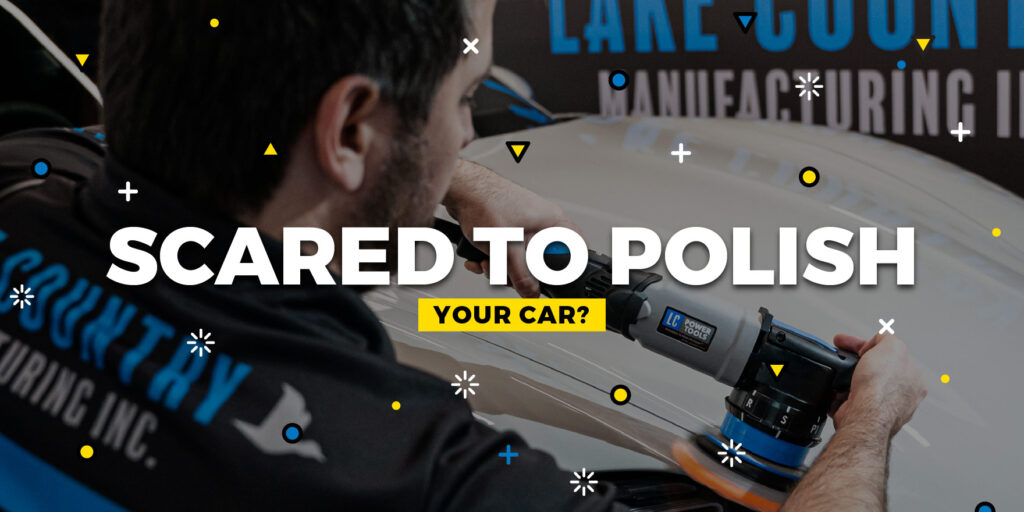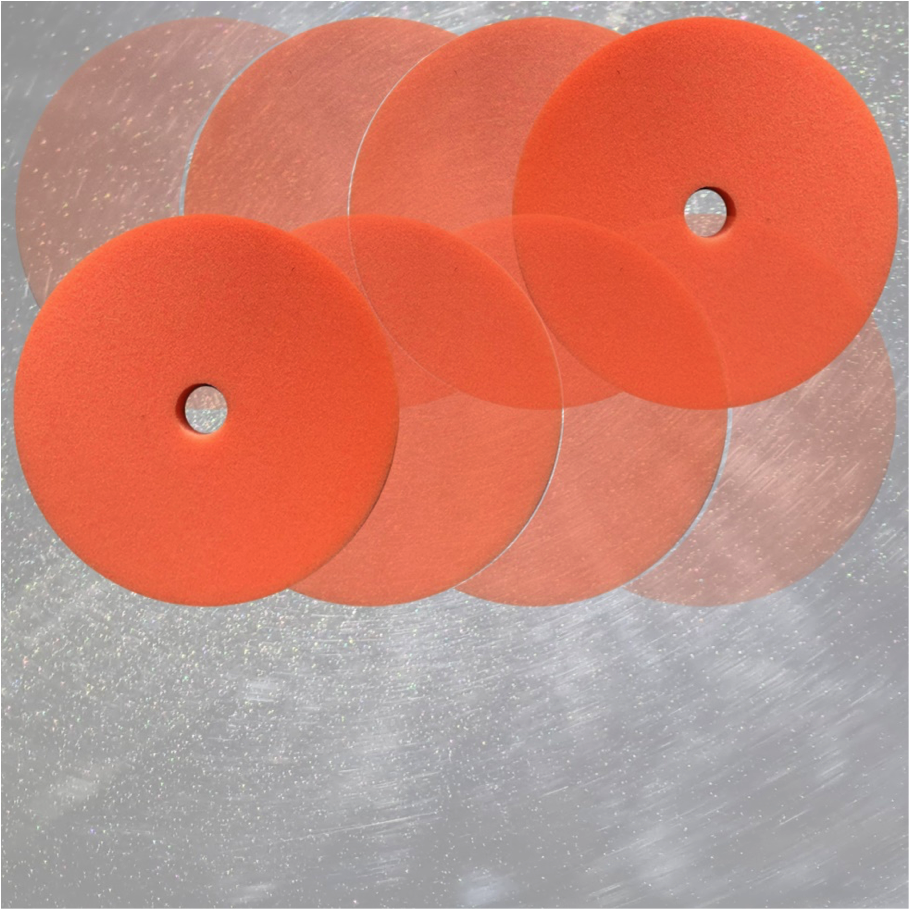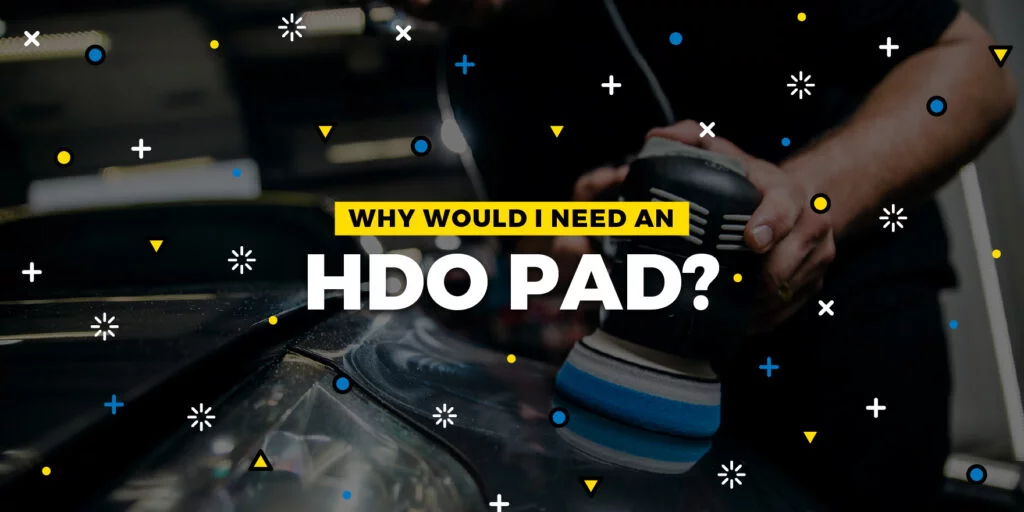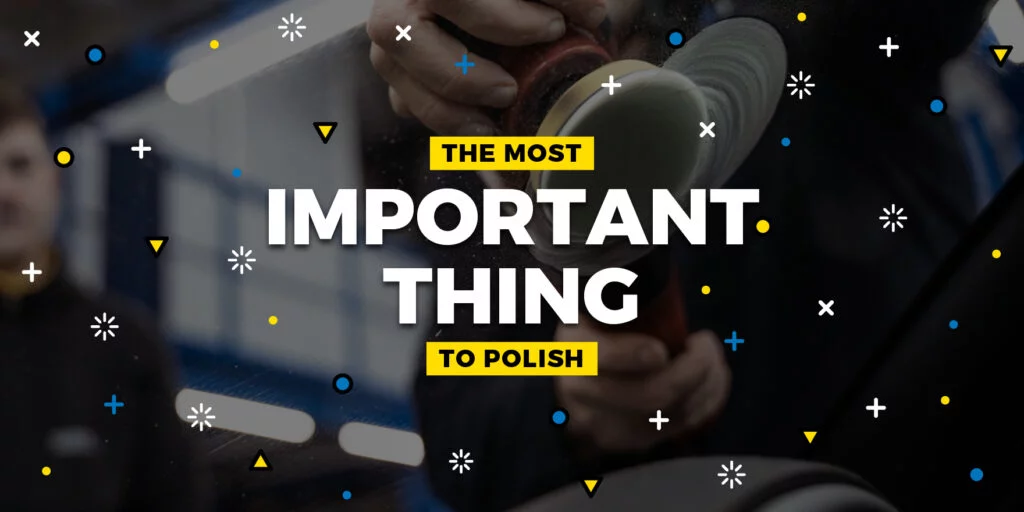
Introducing Lake Country’s New MarineLine Buffing Pads
Experience Superior Marine Detailing with Our Specialized Range At Lake Country, we’re excited to unveil our all-new MarineLine—a comprehensive collection of buffing pads specifically engineered

Machine polishing can seem daunting at first. Most people recognize that there are risks involved and that mistakes could be costly, so it’s no wonder that the first baby steps in machine polishing can feel like a giant leap to some. It seems like there’s just too much to learn!
Welcome, then, to the most reassuring introductory blog about machine polishing on the whole internet. In a few short paragraphs, with absolutely zero jargon, I’m going to make machine polishing for the first time sound like the easy, safe, and rewarding process that it really is.
Machine polishing your paint will wear away a very fine amount of the surface material. If your paint surface is scratched, stained, hazy, or dull, what’s left behind after machine polishing will be shiny, glossy, and beautiful.
Make sure your machine polisher, pads, cloths, and compounds (one medium cut compound, one very fine polish) can be picked up and put down comfortably—somewhere they’ll all stay clean—while you’re working. This could be a special cart or workbench, plastic box, or a cupboard—it’s up to you. Ideally your car will be somewhere cool, and shielded from the elements. Dust-free helps, so if you can work indoors that’s an advantage. Get your favorite station, podcast, or playlist up and running.
Before we begin, I’ve got to make some assumptions here. I’ve got to assume that your paintwork is in ‘normal’ condition—by which I mean it’s not flaking off the panel, showing signs of unprofessional repair work, or key-scratched to oblivion. Challenges like those require experienced technicians to assess and rectify. We need to be talking about minor swirl marks, haziness, dullness, or staining here!
Let’s practice on a nice wide flat section of the hood. Take your Orange SDO pad and visualize a square or rectangle approximately 9 to 12 times the size of the pad. Mask the outline of the shape if it helps.
(Avoid polishing over swage lines and creases at this stage – paint on those is usually slightly thinner, AND the shape creates low surface area / higher pressure contact points thereby increasing cut. Swage lines should be polished ‘up to,’ but not ‘over’, to avoid removing too much material.)
Line your Orange SDO pad up centrally on the machine polisher backing plate, and prime it by spreading the medium cutting compound lightly across the whole pad face. Keeping a comfortable and relaxed posture, put pad to paintwork in the top left-hand corner of your section.
With the polisher speed set around halfway, using just a little more downward pressure than the weight of the machine, work the section in overlapping motions, allowing the pad to travel at around two or three ‘pad widths per second’:
• left to right
• move down half a pad width
• right to left
• down half a pad width
• left to right
• back to the start
• repeat for around 90 seconds
If you find the polisher jumping around awkwardly, try increasing the speed a little more. If it feels like it’s going crazy fast, reduce it. An ideal speed would likely be in the 2500 – 3000 opm range, if your polisher has those ratings to refer to.


Try to work methodically – robotically, even – so that your section is polished equally (and when it comes to polishing the next section, have that overlap the previous one by half a pad width and you’ll maintain consistent results).
Carefully unmask your section, and gently / gradually (don’t scrub hard) wipe away your compound residue with a clean microfiber towel, flipping it if necessary to inspect your results.
‘Full correction’ is what we call it when we polish away (remember: it’s all just abrasion) every single visible defect from the paint surface. This is where it’s possible to make a big mistake. In fact, I wrote a blog about it already!
When paint defects are very minor (shallow), full correction is safe to attempt. The problem is, it is not possible to accurately measure the depth of a scratch. So, if you try to be a hero and it turns out your defects approach, or exceed, the depth of all the clearcoat, then you cannot achieve full correction because there will be no clearcoat left. That’s called ‘screwing up.’ So, remember: it’s OK to improve rather than perfect.
Back to you and your test patch – it’s likely that some of your surface defects are deeper into the surface than would be removed by one gentle pass, and if so, you have a choice. You can either:
A) Go again, removing more clearcoat to further / fully remove the visible defects
B) Stop because you’re happy enough with the improvement / results already
C) Move to a refining stage to achieve an even deeper, more ‘pure’ gloss
I hope this blog has relaxed your machine polishing anxieties. Our Standard Duty Orbital (SDO) pads have been specifically designed to make machine polishing as safe and accessible as can be—and by starting out with the Orange and Black SDO pads, in particular, you’ll discover quickly that there’s nothing to be afraid of. So, take that first step. I promise it’s tiny.

Experience Superior Marine Detailing with Our Specialized Range At Lake Country, we’re excited to unveil our all-new MarineLine—a comprehensive collection of buffing pads specifically engineered

Written for the IDA Detail Dialogue, Published December 2022 In detailing, we naturally obsess over tiny details – hence the name, I suppose. A smudge,

Polishing glass ranks as one of the most overlooked detailing skills and services. Aside from being aesthetically pleasing to have pure transparent glass, it’s incredibly

Experience Superior Marine Detailing with Our Specialized Range At Lake Country, we’re excited to unveil our all-new MarineLine—a comprehensive collection of buffing pads specifically engineered

Written for the IDA Detail Dialogue, Published December 2022 In detailing, we naturally obsess over tiny details – hence the name, I suppose. A smudge,
950 Blue Ribbon Cir N
Oconomowoc, WI 53066
#lakecountrymfg
Select Your Language